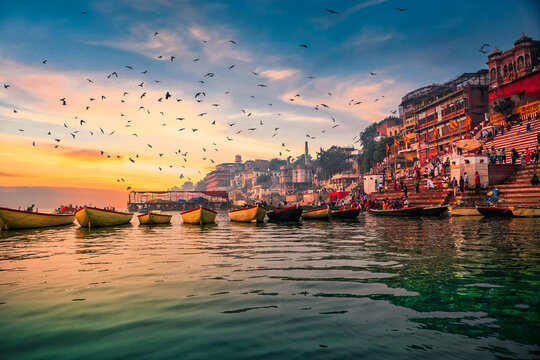The Ganga River, also known as the Ganges, is more than just a body of water; it is the lifeline of millions, the embodiment of purity, and a source of spiritual enlightenment. Flowing majestically through the heart of India, the Ganga holds a special place in the hearts and minds of millions of people, both in India and around the world. Let us embark on a journey to unravel the spiritual significance of this sacred river.
Ancient Scriptures and Mythology:
In Hindu mythology, the Ganga is believed to have originated from the matted locks of Lord Shiva, flowing down to Earth to purify mankind. It is often depicted as a goddess, Ganga Mata, riding on her celestial mount, the crocodile. The epic stories of the Ramayana and the Mahabharata, along with various Puranas, abound with tales of the Ganga’s divine origin and its transformative powers.
*Pilgrimage and Rituals:*
For millennia, pilgrims from all corners of India have traveled to the banks of the Ganga to seek spiritual solace and redemption. Cities like Varanasi, Haridwar, and Rishikesh, situated along its course, are considered sacred, and bathing in the Ganga during religious festivals like Kumbh Mela is believed to wash away one’s sins and bestow blessings. The ritual of immersing the ashes of the departed in the Ganga is considered auspicious, as it is believed to facilitate their journey to the afterlife.
Symbol of Purification:
The Ganga is not just a river; it is a symbol of purity and cleansing. Its waters are believed to possess healing properties, both physical and spiritual. Many devout Hindus drink its water, believing it to be imbued with divine energy. The river’s purifying nature is not merely symbolic but is also supported by scientific evidence, as its waters contain natural minerals and beneficial microbes.
*Environmental Challenges and Conservation Efforts:*
Despite its spiritual significance, the Ganga faces numerous environmental challenges, including pollution, deforestation, and over-extraction of water. Industrial waste, untreated sewage, and agricultural runoff have degraded its waters, threatening not only its ecosystem but also the health of millions who depend on it. However, various governmental and non-governmental initiatives are underway to clean and rejuvenate the Ganga, ensuring its sanctity for future generations.
Conclusion:
The Ganga River is more than just a geographical entity; it is a spiritual force that has shaped the cultural and religious landscape of India for millennia. Its sacred waters have inspired devotion, instilled hope, and provided solace to countless souls. As we strive to preserve its purity and beauty, let us remember the profound spiritual legacy of the Ganga and the timeless wisdom it continues to impart to humanity.
In conclusion, the Ganga River is not just a physical entity; it is a spiritual powerhouse that has captivated the hearts and minds of people for centuries. Its significance extends beyond religion and culture, touching the very essence of human existence. As we continue to marvel at its beauty and seek solace in its waters, let us also strive to protect and preserve this invaluable treasure for generations to come.



